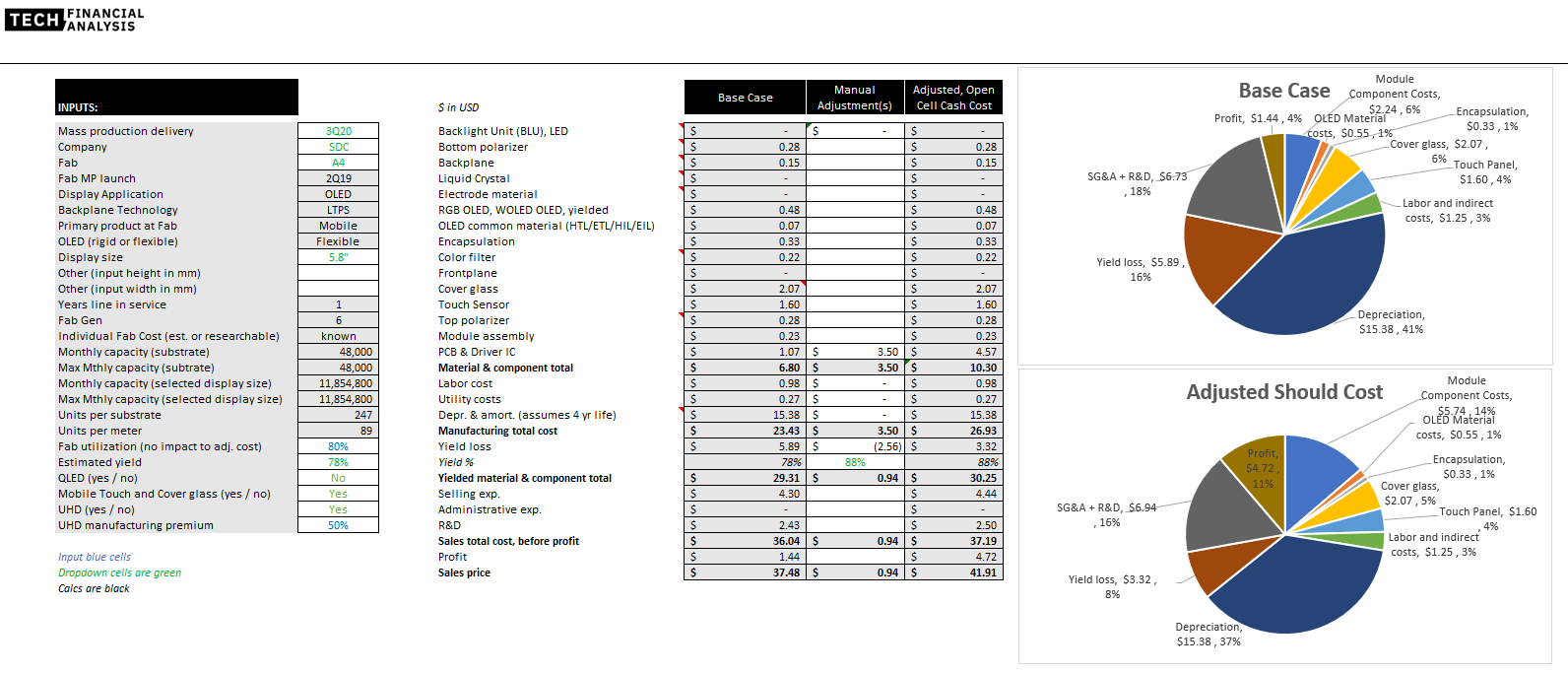iPhone 12 OLED Display Cost Estimate
Apple’s iPhone 12 OLED display cost should be lower than the Iphone 11 OLED display. Apple used this summer’s BOE negotiations to reduce mobile OLED panel prices of LG Display and Samsung Display. We provide a cost range at the following fabs: LG Display E6, BOE Mianyang B11, and Samsung Display A4.
iPhone 12 OLED display savings
We expect OLED display savings in the 3Q 2020 due to aggressive pricing by BOE, and due to the use of Samsung Display’s Y-OTCA technology. Apple is also rumored to use LTPO versus LTPS.
A 5.8” iPhone 12 OLED display was used until Apple confirms the display sizes. The 5.8" display allows comparability to our iPhone 11 pricing of $55 per display.
There was significant chatter this past summer regarding Apple using BOE as a supplier for the iPhone 12 display. We believe the BOE supply discussions were for improved negotiations with LG Display (“LGD”) and Samsung Display (“SDC”). We did not believe Apple’s intended to shift significant production away from SDC any time soon. This is because SDC has significantly better quality than its competitors.
LCDs mainly use an in-cell touch sensor, which integrates touch sensors with the display TFT circuitry. For a flexible OLED display, it is not possible to make a touch sensor panel (“TSP”) sensor layer on a plastic substrate. Previously, a touch sensor was placed on top of the panel (i.e. on-cell) using a base film and adhesives on each side.
The iPhone 12 OLED touch sensor is rumored to utilize Samsung’s Y-OCTA on-cell touch. Flexible substrates with Y-OCTA on-cell touchscreens have the touch functionality built onto the display under the polarizer. The Y-OCTA touch sensor panel ("TSP") is deposited directly on the thin film encapsulation (“TFE”). This achieve a lower cost on-cell solution and simplifies the supply chain. The lower cost is due to eliminating materials (e.g. no support film), improving yields, and decreasing assembly and test requirements. Previously, SDC stated Y-OCTA cuts production costs by 30%. Additionally, LGD has publicly commented that its in-cell and on-cell capex was ‘negligible’. Customers should take this into account for purchasing negotiations.
iPhone 12 price range and cost drivers:
Pricing at the aforementioned supplier fabs could range from $38 to $50 for a 5.8” iPhone 12 display. The range is due to various yields, profit margins, and utilization assumptions. The supplier range is primarily due to depreciation. Our yield estimates range from 74% to 88%. Suppliers will ask for a fab utilization which impacts their fixed costs. Customers should push back on this impact as it is a non-cash cost. However, we have modeled this impact.
Our subscriber Cost Model has customizable details by fab. For example, LGD has materially lower depreciation at the E6 fab. Additionally, we provide supplier yields for BOE and LGD in prior subscription articles.
Samsung Display A4 Cost Model Example

OLED teardown takeaway
For LGD and BOE, there is a manual adjustment for the touch sensor. This is because neither company will have the Y-OCTA technology. Our Excel file provides a teardown of the costs and pricing assumptions for various display sizes. Customer negotiation power is improved by analyzing the costs of each supplier fab (e.g. SDC A4 above). Our model also incorporates historical and forecasted financials to provide insights into a supplier’s health. Customers are also able to adjust assumptions based on technical choices that impact the actual reported supplier costs.